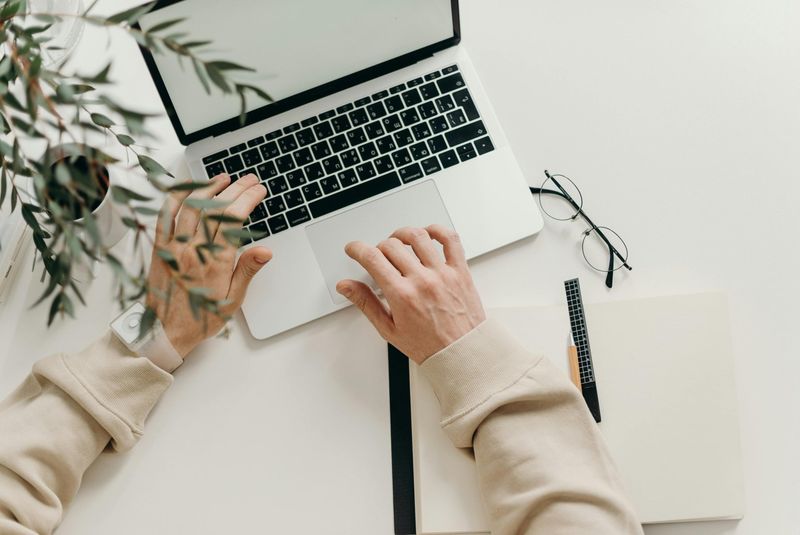Introduction

"I start feeling anxious Sunday evening about going to work tomorrow." "The first thing I feel when I wake up every day is stress." "Work is never finished; I always feel I'm not good enough."
If these statements sound familiar, you may be experiencing workplace anxiety. Surveys show over 60% of working professionals frequently feel work stress and anxiety, with 15-20% reaching levels requiring intervention.
Workplace anxiety isn't "being dramatic" or "poor stress tolerance" but a common phenomenon in modern work environments. However, long-term anxiety affects health, work performance, and quality of life. This article will help you identify sources of workplace anxiety, understand its mechanisms, and provide scientifically effective coping strategies.
What Is Workplace Anxiety
Manifestations of Workplace Anxiety
Physical symptoms:
- Insomnia or poor sleep quality (difficulty falling asleep, nightmares, early waking)
- Headaches, shoulder/neck stiffness, stomach discomfort
- Fatigue but unable to relax
- Rapid heartbeat, shortness of breath
- Appetite changes (binge eating or loss of appetite)
Psychological symptoms:
- Persistent worry about work (can't stop thinking about work even after hours)
- Excessive self-criticism ("I'm so terrible" "I definitely messed up")
- Difficulty concentrating
- Easily irritated, mood swings
- Fear or avoidance of work
Behavioral symptoms:
- Procrastination (avoiding tasks due to anxiety)
- Overworking (using busyness to mask anxiety)
- Social withdrawal (not wanting to attend company events)
- Substance dependence (coffee, alcohol, cigarettes) to cope with stress
Workplace Anxiety vs Normal Stress
Normal stress: Short-term, with clear source (like project deadlines), relieved after task completion, doesn't affect daily functioning.
Workplace anxiety: Persistent, generalized (anxious even without urgent tasks), affects sleep, health, and quality of life, difficult to self-relieve.
5 Major Sources of Workplace Anxiety
Source 1: Excessive Workload
Manifestations:
- Tasks are never finished
- Requires long overtime to complete
- No time for breaks or meals
- Multiple urgent tasks simultaneously
Why anxiety: Long-term overload keeps the brain in "fight mode," unable to recover, leading to chronic stress.
Source 2: Role Ambiguity/Conflict
Manifestations:
- Unclear about own responsibilities
- Receiving contradictory instructions
- Being asked to do things beyond job duties
- Don't know how to be evaluated
Why anxiety: Uncertainty leaves people at a loss, not knowing what the "correct" standard is.
Source 3: Lack of Control
Manifestations:
- Work methods strictly limited (micromanagement)
- Unable to influence decisions related to oneself
- Passively receiving tasks, no autonomy
- Unable to adjust work pace
Why anxiety: Lack of control is one of the strongest predictors of workplace anxiety. People need some autonomy to feel safe.
Source 4: Interpersonal Relationship Pressure
Manifestations:
- Tense relationship with supervisor (criticism, lack of recognition)
- Colleague competition or conflicts
- Poor team atmosphere (scheming, lack of support)
- Being excluded or isolated
Why anxiety: Interpersonal conflicts trigger social threat responses, long-term "alert state."
Source 5: Career Development Uncertainty
Manifestations:
- Worry about layoffs or unemployment
- Can't see promotion opportunities
- Feel work lacks meaning or growth
- Confused about future career direction
Why anxiety: Future uncertainty threatens sense of security and self-worth.
Systematic Methods for Coping with Workplace Anxiety
Layer 1: Emergency Strategies (Relieve Current Anxiety)
1. Breathing Technique (3-minute rapid anxiety reduction)
4-7-8 Breathing:
- Inhale 4 seconds (through nose)
- Hold breath 7 seconds
- Exhale 8 seconds (through mouth)
- Repeat 4-5 times
Principle: Activates parasympathetic nervous system, lowers body alertness level.
2. Body Relaxation Exercise
Progressive muscle relaxation:
- Sequentially tense and relax each body part (fists→forearms→shoulders→face→legs)
- Tense 5 seconds, relax 10 seconds
- Notice the contrast between tension and relaxation
3. 5-4-3-2-1 Grounding Method (Combat anxiety attacks)
Name:
- 5 things you can see
- 4 things you can touch
- 3 sounds you can hear
- 2 smells you can detect
- 1 taste you can identify
Function: Pulls attention from anxious thoughts back to present moment, interrupts anxiety cycle.
Layer 2: Cognitive Adjustment (Change Anxious Thinking)
1. Identify Cognitive Distortions
Anxiety often accompanies these thinking patterns:
- Catastrophizing: "If this project fails, I'm finished"
- Mind reading: "Boss definitely thinks I'm terrible"
- All-or-nothing: "If not perfect, it's failure"
- Overgeneralization: "I messed up this time, I'm a loser"
2. Challenge Anxious Thoughts
Use "Socratic questioning":
- What's the evidence? "What evidence supports this thought?"
- Worst case scenario? "Even if worst happens, can I cope?"
- What's the probability? "What's the real likelihood of this occurring?"
- What would a friend say? "If a friend faced this, what would I tell them?"
3. Reframing
Example:
- Anxious thought: "I'll definitely mess up this presentation."
- Reframe: "I'm well-prepared, even small mistakes are normal. This is a learning opportunity."
Layer 3: Behavioral Change (Optimize Work Methods)
1. Time and Task Management
- Pomodoro Technique: 25 minutes focus + 5 minutes break, prevents fatigue accumulation
- Priority Matrix: Distinguish important vs urgent, avoid drowning in trivial matters
- Single-task mode: Do one thing at a time, reduce cognitive load
- Set boundaries: Define work hours, turn off email notifications after work
2. Seek Support and Communication
- Communicate with supervisor: Honestly express excessive workload, seek adjustments ("I currently have projects X, Y, Z; to finish on time, need to postpone Z or seek support")
- Seek colleague assistance: Don't shoulder everything alone
- Build support network: Confide in trusted colleagues or friends
3. Work Environment Optimization
- Physical environment: Tidy desk, adequate lighting, plants
- Reduce distractions: Turn off unnecessary notifications, reserve focused time blocks
- Rest space: Find a place to briefly leave workstation and relax
Layer 4: Lifestyle Adjustments (Improve Overall Stress Tolerance)
1. Sleep Optimization
- Fixed schedule, ensure 7-8 hours sleep
- Avoid screens 1 hour before bed
- Create sleep rituals (like meditation, reading)
2. Regular Exercise
- At least 150 minutes moderate-intensity exercise weekly (like brisk walking, swimming)
- Exercise is the most effective natural anti-anxiety agent
- Brief activity during work breaks helps too (stairs, stretching)
3. Mindfulness Meditation
- 10-15 minutes daily meditation significantly reduces anxiety
- Focus on breath or use meditation apps (like Headspace, Calm)
- Cultivate "observer perspective": Notice anxiety but don't get swept in
4. Nutrition and Substance Management
- Reduce caffeine (exacerbates anxiety)
- Regular meals, avoid blood sugar fluctuations
- Avoid using alcohol to "relax" (worsens long-term anxiety)
Layer 5: Career-Level Adjustments (Long-term Solutions)
1. Assess Work Fit
If anxiety persists and can't be relieved through above methods, ask yourself:
- Does this job match my values?
- Do I have growth opportunities?
- Is the work environment toxic (like workplace bullying, excessive competition)?
- Do my skills match job requirements?
2. Consider Career Adjustments
If work environment can't change and seriously affects health, may need:
- Internal transfer
- Find new job
- Switch career tracks
Important: Don't make major decisions during anxiety peaks. Stabilize emotions first, then evaluate options.
When to Seek Professional Help

If experiencing the following, recommend consulting mental health professionals:
- Anxiety persists over 3 months, seriously affecting quality of life
- Panic attacks (sudden extreme fear, violent heartbeat, difficulty breathing)
- Self-regulation methods ineffective
- Depressive symptoms appear (persistent sadness, loss of interest, self-harm thoughts)
- Starting to depend on alcohol or drugs
Professional treatment options:
- Cognitive Behavioral Therapy (CBT): Most effective anxiety treatment
- Mindfulness-Based Cognitive Therapy (MBCT): Combines meditation with CBT
- Medication: When necessary, doctors may prescribe anti-anxiety or antidepressant medications
Workplace Anxiety Prevention: Building Psychological Resilience
1. Cultivate "Growth Mindset"
View challenges as learning opportunities, not threats. Failure is feedback, not identity label.
2. Establish "Psychological Buffer Zone"
- Identity outside work (hobbies, family roles)
- Diversified self-worth sources (not solely dependent on work achievements)
3. Regular "Psychological Check-ups"
Ask yourself weekly:
- What's my stress level (1-10 scale)?
- What's causing me stress?
- What am I doing to care for myself?
- What needs adjusting?
4. Cultivate "Psychological Flexibility"
Accept imperfection, adapt to change, act guided by values rather than driven by anxiety.
To You Who Are Anxious
You're not alone. Workplace anxiety is extremely common, not because you're "not strong enough" or "too fragile."
Anxiety doesn't equal failure. It's the body's alarm system, reminding you to adjust. Learn to listen rather than suppress.
Change takes time. Don't expect to solve all problems immediately. Small daily improvements are progress.
Self-care isn't luxury. Rest, relaxation, setting boundaries isn't "slacking" but necessary for maintaining long-term performance.
Seeking help is wisdom. Whether confiding, consulting, or therapy, proactively seeking support is a sign of strength.
Conclusion
Workplace anxiety is a common challenge in modern work life, but it can be understood, managed, and improved. The key is:
- Identify sources of anxiety
- Use scientific coping strategies
- Build long-term psychological resilience
- Seek professional help when necessary
Work is part of life, but not all of it. Your value isn't determined solely by work performance. Learn to protect yourself in stress, find balance in anxiety, let work serve life rather than the reverse.
Starting today, try one small change—maybe 5 minutes of meditation during lunch, maybe turning off work email after hours, maybe saying "no" to unreasonable workload. Each step helps you regain sense of control.
Remember: You deserve a professional life not dominated by anxiety.
Submit a comment Cancel reply